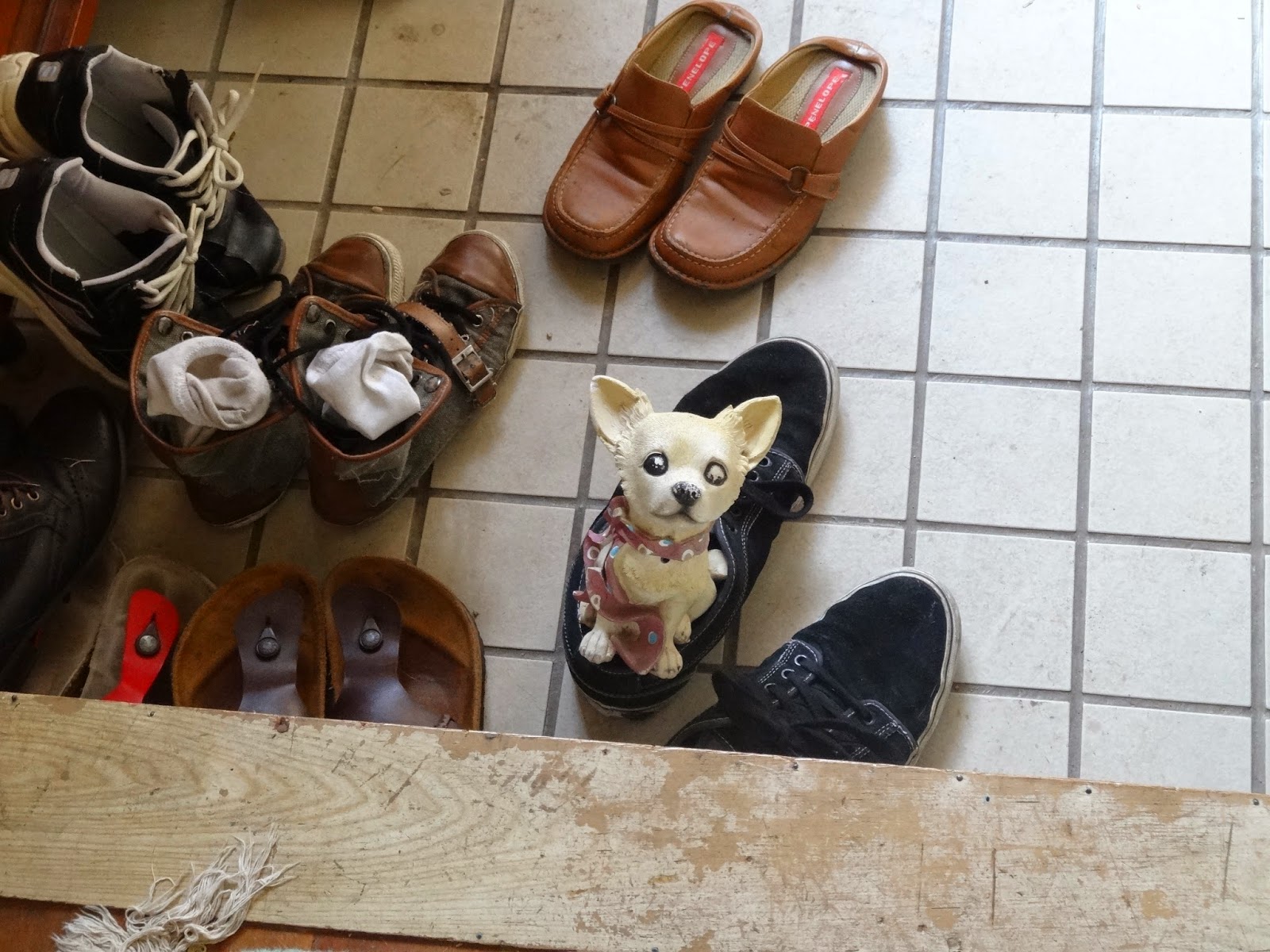Our last day in Kyoto was our most memorable one. We had exhausted our interest in crowded touristy sites and needed a rest day. Lucky for us, our host, Masa, decided to take the day off work (he builds traditional Japanese houses!!) to bring us to his favourite place in Kyoto. He mentioned something about a garden and temple and I wasn't quite sure that I was ready to see yet another temple. However, after skilfully manoeuvring his stubby Japanese car through the winding roads, we arrived in the rural town of Ohara, situated in the mountains just north of Kyoto city.
The most well-known temple in Ohara is the Sanzen-in Temple which was established some time between 794-1185 by a monk named Saicho, who founded the Tendai sect of Japanese Buddhism. In the same area, there were also many smaller temples, all belonging to the Tendai sect as well. The pathway leading up to the temples was lined with shops selling pickled vegetables and rice crackers. The shop owners spoke with a heavy Kansai accent (Kansai is the region that Kyoto is located in) and often said "ookini" instead "arigato". We walked past the famous temple, only stopping for 2 seconds in front of it and deciding to move on.
Shorin-in Temple stood out to us because of its architecture. We asked Masa if he had ever worked on a building like that. He said no, but that he had a friend who had worked on its maintenance. As we started towards our next destination, we heard a low hum echo from the main hall - a group of monks had started chanting! This Shomyo style of Buddhist chanting had originated from China.
Shorin-in
Hosen-in Temple had a very modest entrance but quite a steep entrance fee (800yen!!). Upon entry, we were given a ticket stub and I made out the words "tea ticket". The main building was constructed with traditional Japanese architecture, meaning it was held together without a single nail. Impressive, eh?
Posing with a traditional fireplace
The place was surrounded by different shades of green - ferns, mosses, trees, shrubs, etc.. Finally we got to the farthest room. The floor was completely covered with tatami, a common flooring in Japanese buildings made of a rice straw core and a soft rush straw covering. On one side of the room there was a small shrine. On the other two sides, we saw paradise.
The pillars acted as picture frames and the pictures we saw were absolutely surreal. The first picture featured a 700-year-old pine tree and the second, a luscious bamboo forest. There were only a few people around us and not a single one of them was foreign to the country. A young Japanese lady took our tea stubs and served us each a bowl of matcha and a wagashi, a small sweet made of mochi, azuki bean paste and fruits. Sitting in seiza style, with my legs tucked beneath my thighs, I sipped my matcha and took it all in.

700-year-old pine tree
Sneaky blurry photo
The making of tea with tea leaf powder was first seen in the Tang Dynasty in China and the process of mixing the powder and hot water with a bamboo whisk was developed in the Song Dynasty. This practice was brought over to Japan and became popular while it died out in China. Each matcha bowl is hand-made and unique with asymmetrical designs that show the beauty in imperfection. Will the Botanist and I both agreed that this was our favourite place in Kyoto, and definitely one of the highlights of our entire trip. I'm usually not big on buying souvenirs since it's hard to travel with so much stuff, but I couldn't help picking up a matcha bowl before leaving.
On our way out, we walked through the beautiful gardens around Hosen-in, and watched a group of monks exit a beautiful house and into shiny black cars. Nearby, a cat was taking a nap on the back of a scooter, not noticing the huge commotion happening just steps away.
The next thing on our agenda was to walk along the Philosopher's walk, a 2km pedestrian pathway that ran along a stream and under cherry trees. Unfortunately at this time all the cherry blossoms had already bloomed and fallen off. Nevertheless, it was a pleasant stroll accompanied by many stray cats.
At the end of the walk, we came to Nanzen-ji Temple. It was very spacious. To be honest, I don't remember much about it except for the aqueduct that stretched across the temple grounds. I was quite surprised to see this architecture here. The structure was a part of a canal system that carried water and goods between Kyoto and Lake Biwa.
Since it was our last night here, on the way back we stopped at a florist and picked up some flower's for Masas lovely mum!
We got ready to go out and meet some friends, one of them being Cisi, someone I haven't seen since I was 17!! We had met on a 5 week-French program in Quebec. I noticed from her photos on Facebook that she was in Japan. Luckily we would be in Kyoto at the same time for one day! She was more beautiful than I had remembered and just as lovely as ever!! We hung around the bank of Kamo River before heading to an Izakaya.
That was a long post. Thanks for reading! Especially you Russians. I have no idea how you guys even managed to find my blog but much love to you all :)































































